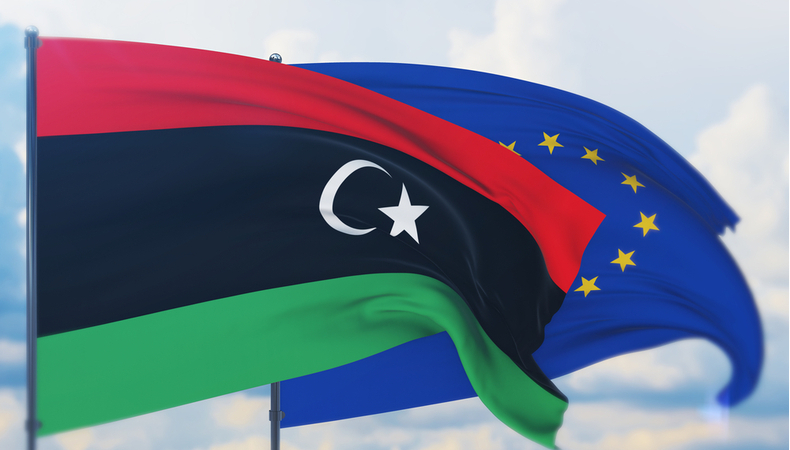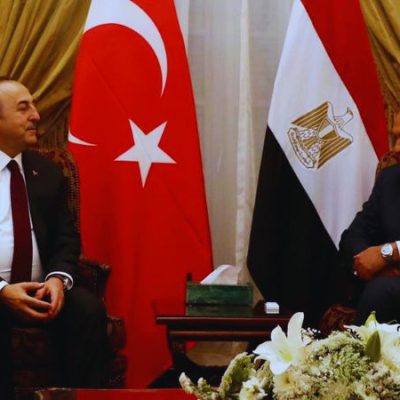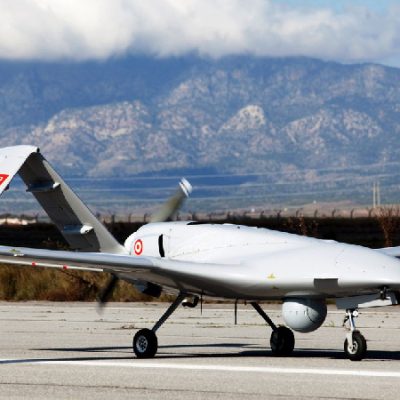Russians have built a trench in the Libyan desert, Ankara and the Kremlin obstruct the peace process and put Europe at risk

At the end of 2019, the Tripoli-based Government of National Accord (GNA) signed a troubling agreement with the Turkish President Recep Tayyip Erdogan to rewrite both countries’ exclusive economic zones, challenging gas exploration and the construction of the pipelines between Greece, Israel, and Cyprus. Erdogan intended to extend his military assistance to Libya to cement Turkish economic influence and political control over the eastern Mediterranean.
Russia, fighting on the General Khalifa Haftar side, has dramatically increased the number of Wagner and pro-Bashar al Assad Syrian mercenaries operating in Libya.And as we see in Syria, Russia seeks to secure its foothold in the Mediterranean and extend its sphere of political influence into the Middle East and North Africa. Again, following a Syrian model, Putin floods Libya with mercenaries and weapons while he simultaneously attempts to supplant the U.N.-led political process through sham peace talks.
The presence of Russian-backed mercenaries has long been denied, but today satellite images unveil that the Libyan Arab Armed Forces of Haftar are building a mega trench from Sirte to the airbase of al Jufra, in Southern Libya. In particular, US intelligence sources showed to the CNN a long trench, that runs in the Libyan desert and some areas that look like protected fields where land forces of the Benghazi general could find a defense.
By today, Saturday, Jan.23, the ceasefire agreement in Libya provided that the mercenaries deployed on both sides of Libya had to be withdrawn or, at least, that departure from the country should begin. For months Russian mercenaries from Wagner have been fighting with Haftar, while President Fayez Serraj’s Government has used thousands of Syrian mercenaries transferred to Libya from Turkey. For the observers, the construction of this “wall in the desert” is a further confirmation of the Russian desire to remain in the country, despite the peace negotiations and all other political negotiations led by the United Nations. On the other hand, the Turks seem to have no intention of withdrawing the mercenaries they had transferred from Syria, putting the peace process dangerously at risk.
A diplomat calls this separation line a Berlin wall in the desert: the trench is observable by satellites and already extends for more than 70 kilometers, from Sirte on the coast to Jufra airport, in the middle of the country, where a ten Russian fighter-bombers Mig and Sukhoi have been deployed. The trench is one of the reasons why “we see no intention or movement on the part of the Turkish or Russian forces to respect the agreement brokered by the United Nations, US intelligence sources told CNN. Tripoli’s defense minister in the GNA, Salaheddin Al-Namroush, also made it clear: “I don’t think anyone digging such a trench will leave anytime soon.”
The fighting in Libya has killed over 2,000 Libyans with over 150,000 internal displaced people. Military activity between 2019 and 2020 forced the U.N. to close many refugee centers in the Western region.The United States and its European alliesremain concerned about a very real terrorist threat, particularly ISIS and Ansar al-Sharia emanating from Libya. These terrorist groups taken advantage of the instability and increased their activity in southern Libya. The European Union is concerned with seniority in an increasingly militarized Mediterranean, a vital corridor for international trade. In particular Eu governments remain concerned that migration and terrorism will further destabilize their countries, causing the kind of disorder that Russia and Turkey, in concert with some Gulf countries supporting General Haftar, want and will exploit.




